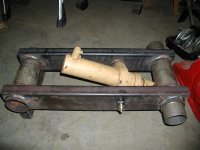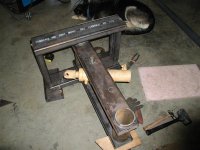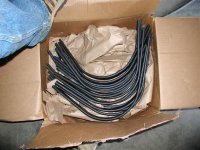jimgerken
Veteran Member
OK, here goes. I may/will be building a rake for landscape use, for driveway maintenance, and for rocky ATV trail maintenance. I have recently sold my old one, a highly modifyed King Kutter 72 inch, to which I had added just about everything. But before I start, I thought I'd ask all you experts for input on what you feel are valuable features. To stimulate the conversation a bit, so far I am planning:
side-to-side hydraulic swiveling (normally done manually by pulling out a pin..)
weight brackets to allow addition of small suitcase weights
quick-hitch compatibility (I use Speeco brand Q.H.)
This will hang on my 2520, with hydraulic TNT.
When used on the trail, the use is extreme duty, with rocks as big as a foot across expected to move off the trail with the rake's guidance. Any thoughts on using the heavy duty rakes tines Agri-Supply has instead of the standard duty ones. the HD ones are 1.25 x 3/8". they cost 6 bucks each, but I would also space them out a bit further too.
Thanks for any input you have.
side-to-side hydraulic swiveling (normally done manually by pulling out a pin..)
weight brackets to allow addition of small suitcase weights
quick-hitch compatibility (I use Speeco brand Q.H.)
This will hang on my 2520, with hydraulic TNT.
When used on the trail, the use is extreme duty, with rocks as big as a foot across expected to move off the trail with the rake's guidance. Any thoughts on using the heavy duty rakes tines Agri-Supply has instead of the standard duty ones. the HD ones are 1.25 x 3/8". they cost 6 bucks each, but I would also space them out a bit further too.
Thanks for any input you have.


